There are 14 snake species you may encounter in Massachusetts. They come in a variety of colors, patterns with a host of habitats and diets.
The majority of the species you find in Massachusetts are non-venomous, including those you may find in your basement or yard.
Snakes in Massachusetts
The 14 snakes you may encounter in Massachusetts includes:
1. Northern Copperhead
Scientific name: Agkistrodon contortrix.
Common name: northern copperhead, copperhead.
Length: up to 53 inches (135 cm).
Venomous: Yes.

The northern copperhead is one of the venomous snakes you may encounter in Massachusetts.
It can grow up to 53 inches (135cm) with an hourglass pattern that runs down the body.
The hourglass is dark chestnut cross bands that are narrow in the center and wider at the side with small dark spots between the cross bands. They have dark round spots on the belly. Their heads are copper-red.
Juveniles are lighter in color with a distinct yellow tip on their tail and a narrow line running through the eyes.
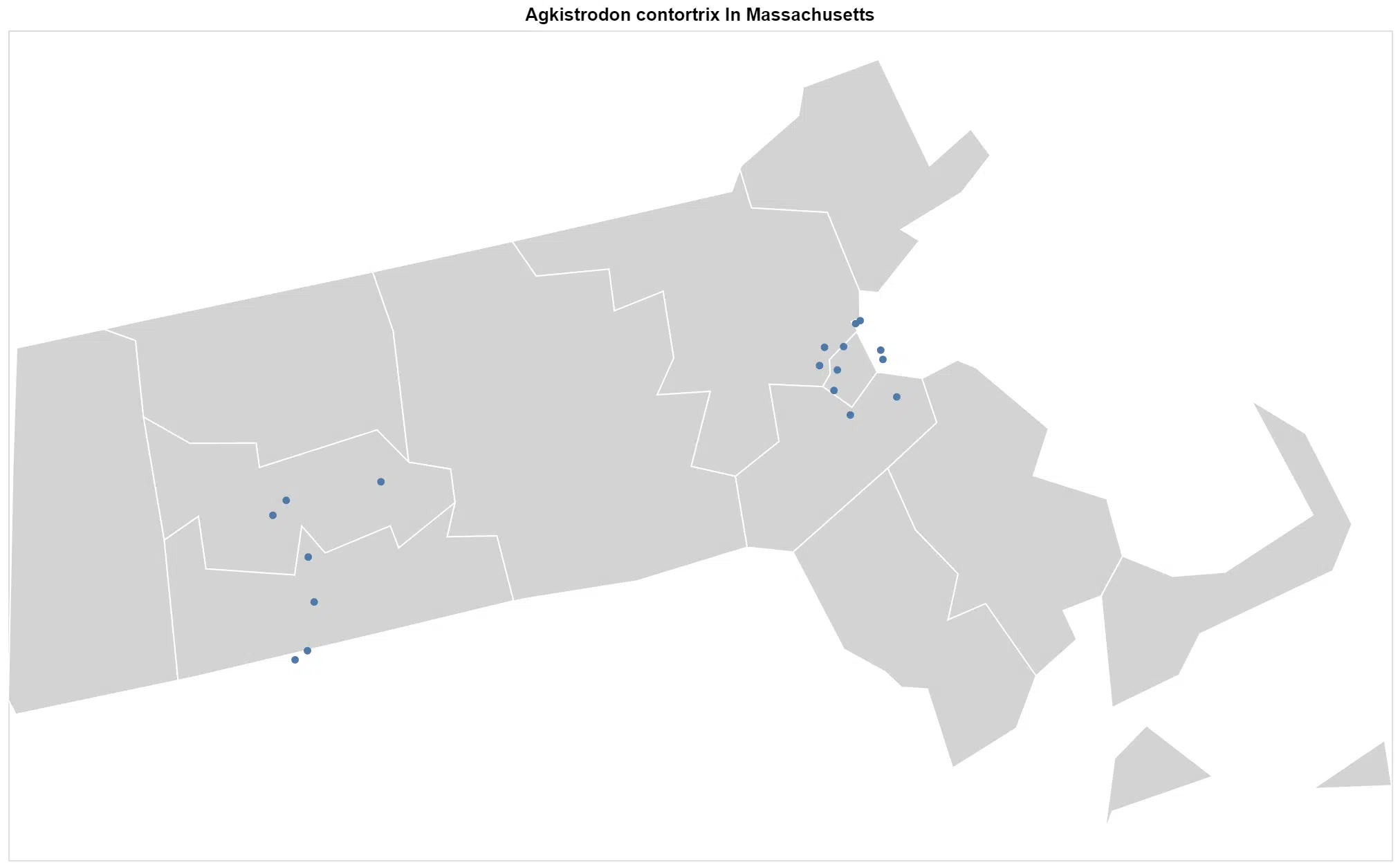
They are quiet and lethargic snakes that will move away slowly if you encounter them. If you agitate them, they will strike, while vibrating their tails.
The northern copperhead is endangered in Massachusetts, which means it is illegal to own, harass or kill one of these snakes.
In the event you do get bitten, seek immediate medical treatment.
2. Timber Rattlesnake

Scientific name: Crotalus horridus.
Common name: timber rattlesnake, canebrake rattlesnake, banded rattlesnake.
Length: 30 – 60 in (76 – 152 cm)
Venomous: Yes.
The timber rattlesnake is the only other venomous snake you may encounter in Massachusetts, growing to 60 inches (152cm) and weighing up to 1,500 grams (3.3lb).
They have a brown or black cross band pattern on their backs, which is set on a yellow to brown or gray background. The cross bands have zigzag edges, though they can be V or M shaped.
Some specimens have a rusty-colored stripe.
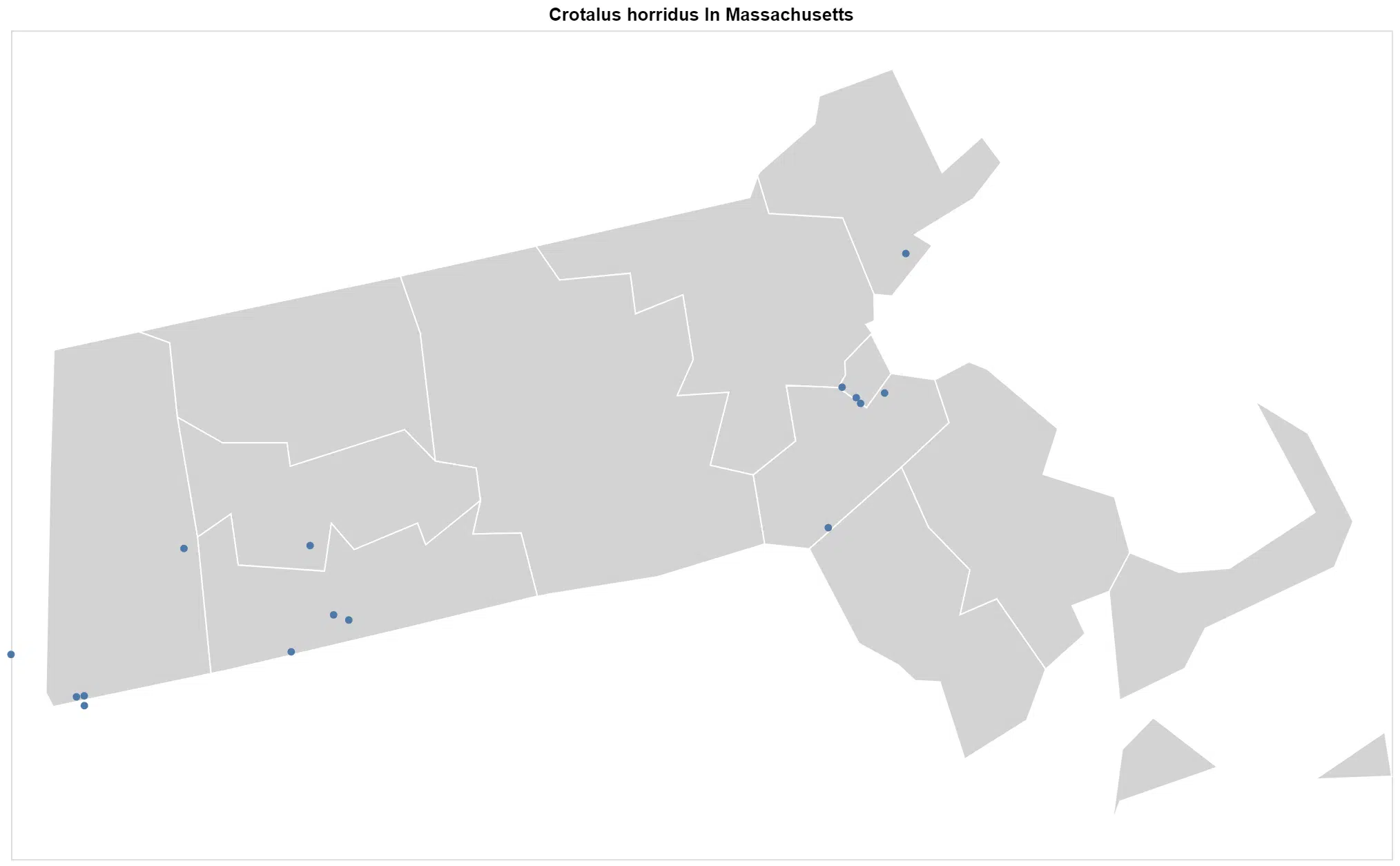
They are very common in forested areas, though gravid females prefer rocky ledges and warm temperatures, where she basks in the sun before giving first.
They hibernate in dens during the winter, often in the same burrow as eastern rat snakes and copperheads.
The timber rattlesnake is considered endangered in Massachusetts and cannot be owned, killed, or harassed.
If you think you have been bitten by one of these snakes, ensure you seek immediate medical attention.
3. Eastern Rat Snake

Scientific name: Pantherophis alleghaniensis.
Common name: eastern rat snake.
Length: 36 – 79 in (90 – 200 cm)
Venomous: No.
Eastern rate snakes can grow to 79 inches (200cm) in length.
Adults are shiny back with cream or white on their throat and chin. Their bellies have a checkerboard pattern in black and white, that changes to gray towards the tail.
Juveniles are different from adults and tend to have dark patches on a gray base color.
These snakes are mostly active during the night in summer. They are burrowers and fantastic at climbing, they sometimes go into the water. They can be found under boards, in trees, and under rocks.
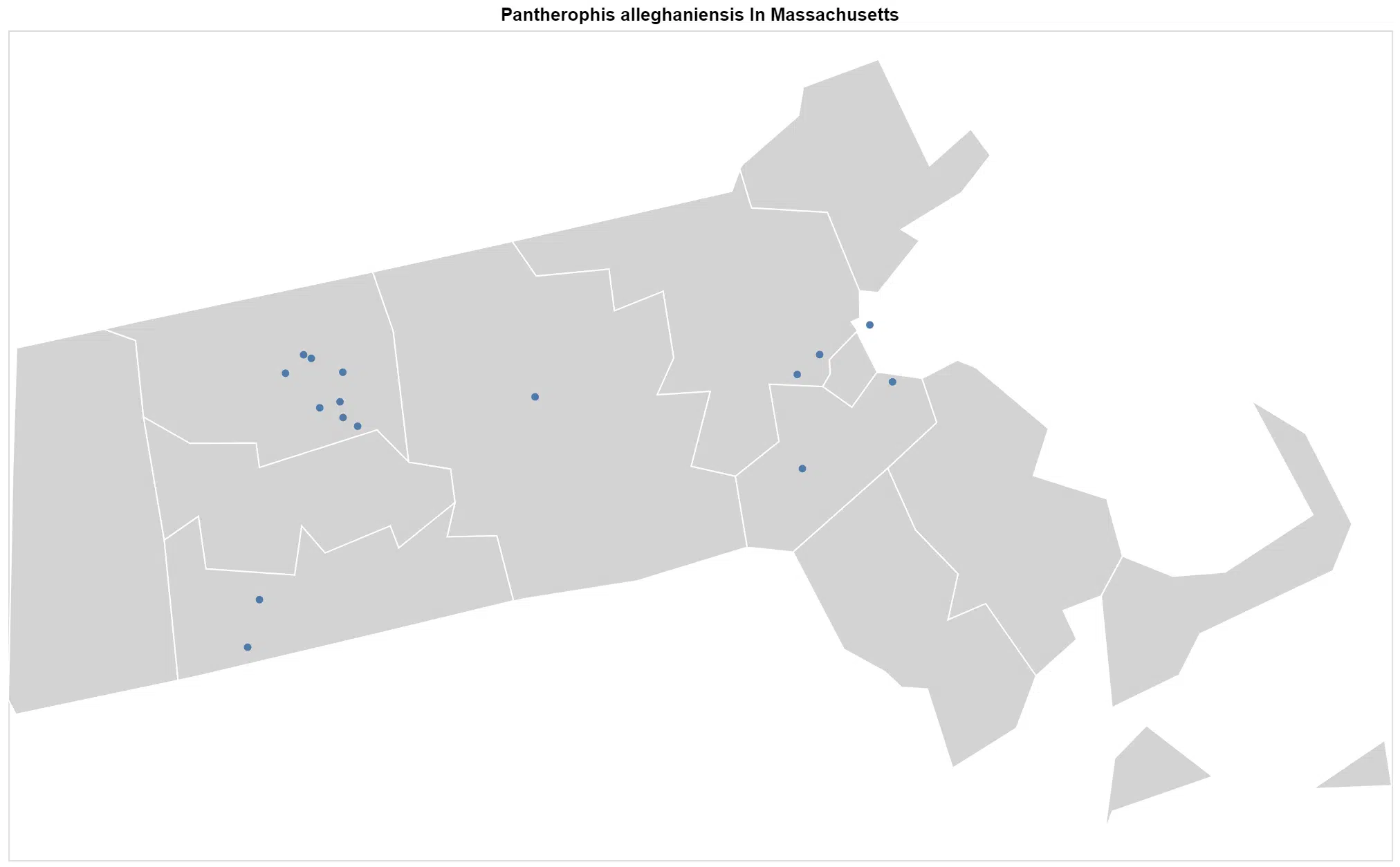
They are not aggressive and will freeze when frightened. If harassed, they will give off an awful smell, which puts predators off. They may also coil their bodies and shake their tails.
4. DeKay’s Brownsnake

Scientific name: Storeria dekayi.
Common name: brown snake, DeKay’s snake.
Length: 9 – 13 in (23 – 33 cm)
Venomous: No.
The DeKay’s brown snake is gray or brown with a light central stripe, which is bordered by black dots. They are lighter brown, or even pink, with black dots on their belly.
They can measure up to 49cm.
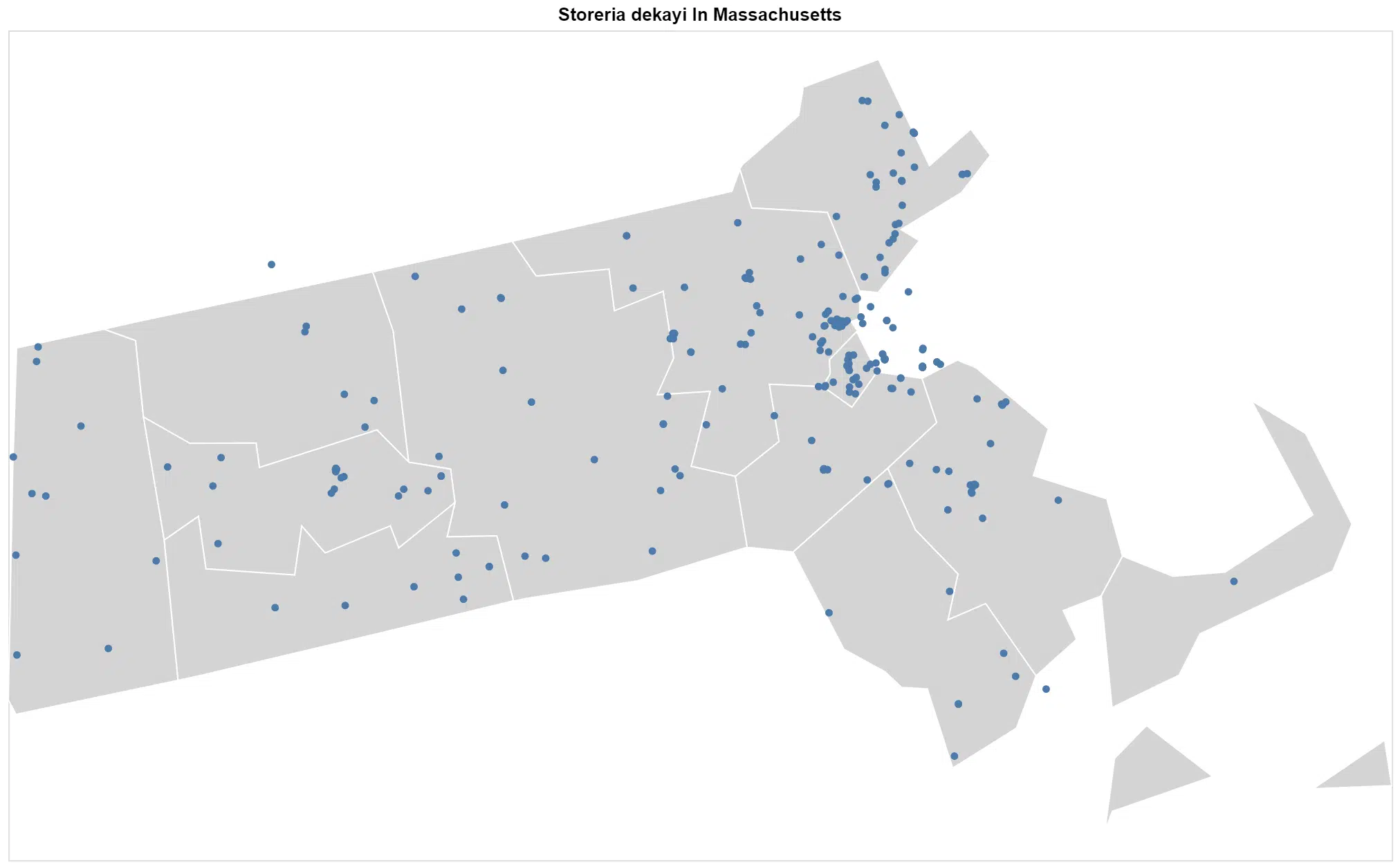
Their primary diet is earthworms, slugs, and snails. Their specialized jaw enables them to remove the snail from the shell.
5. Eastern Garter Snake

Scientific name: Thamnophis sirtalis sirtalis.
Common name: Eastern garter snake.
Length: up to 49 in (124 cm)
Venomous: No.
Eastern garter snakes can grow up to 48.7 inches (124cm) in length with females being larger than the male. Their color can vary from black to brown or grey with a distinct white or yellow stripe.
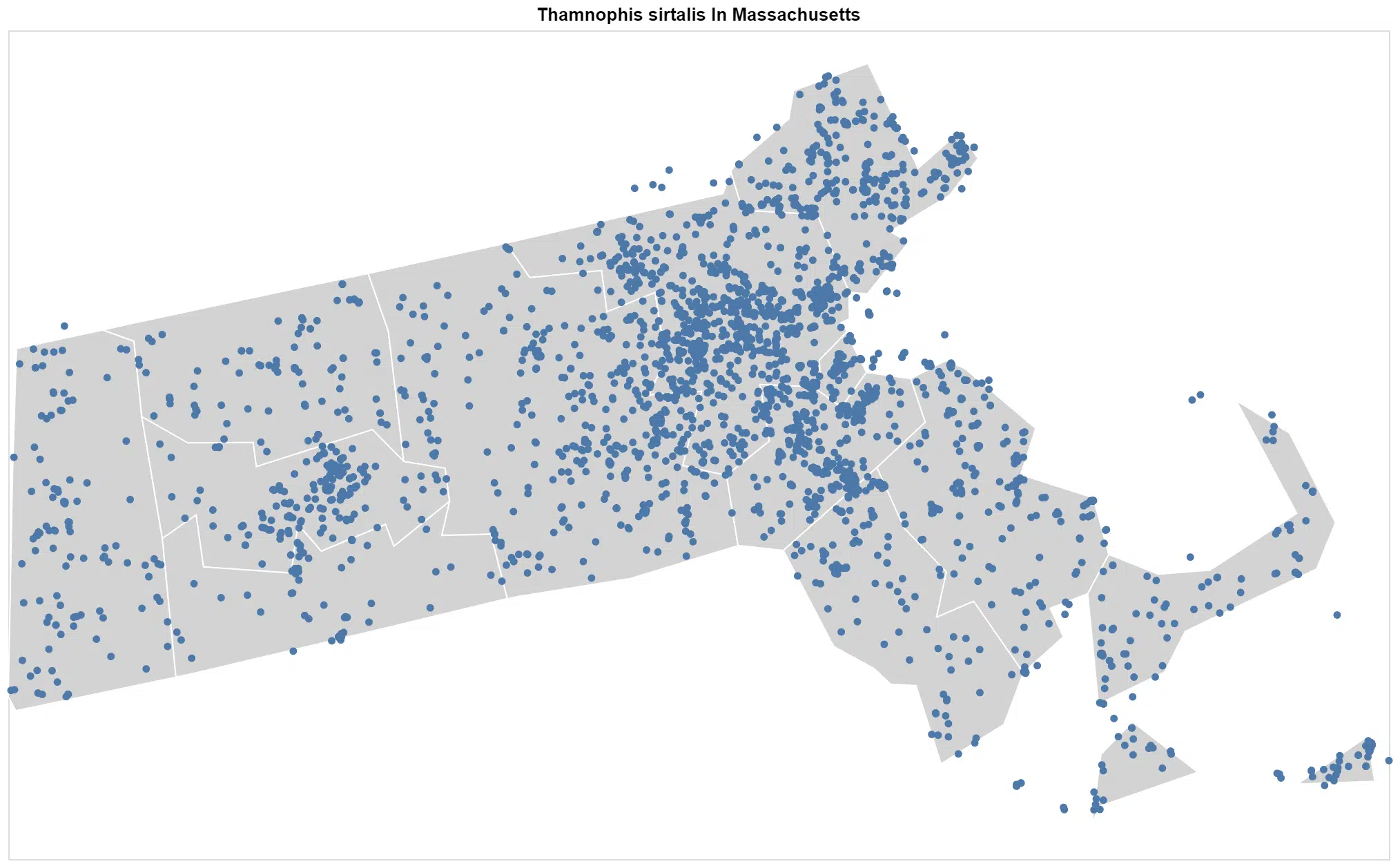
They are widespread in the United States and can be found in urban environments and fields, outbuildings, and trash dumps.
It’s not uncommon to encounter this snake near rivers, swamps, ponds, quarries, lakes, and streams. They hide under stones, debris, and logs.
6. Eastern Black Racer
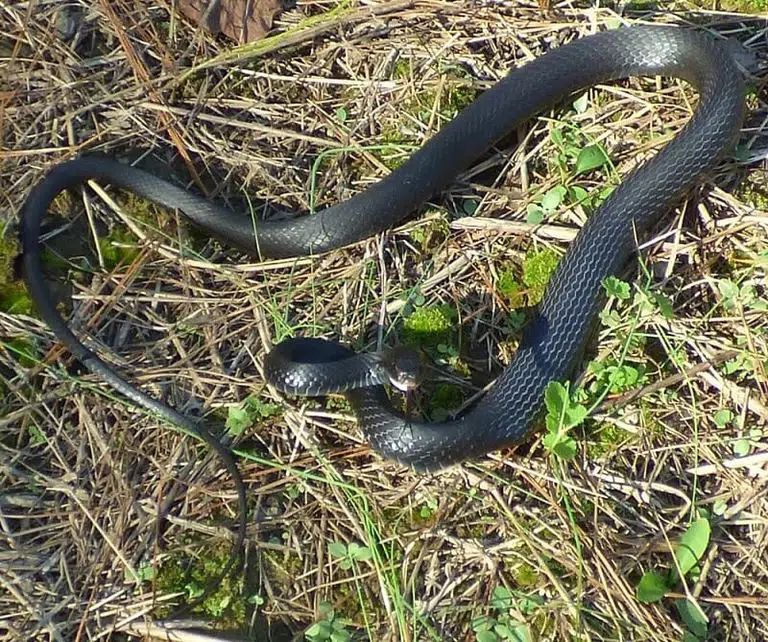
Scientific name: Coluber constrictor.
Common name: (Eastern) black racer.
Length: up to 73 in (185 cm)
Venomous: No.
The largest Eastern black racer was measured at 73 inches (185cm) with the majority being a solid color with a lighter belly.
Juveniles are patterned with a row of dark patches on a lighter base color, the patterns gradually fade and the snake darkens as they age.
These are fast-moving and very active snakes with excellent vision. It’s not uncommon for them to raise their heads to see above the shrubs or grass where they are crawling.
They flee from danger, but if you corner them, they will bite and put up a fight. They also vibrate their tails in dry leaves, which makes them sound similar to a rattlesnake, which is used to deter predators.
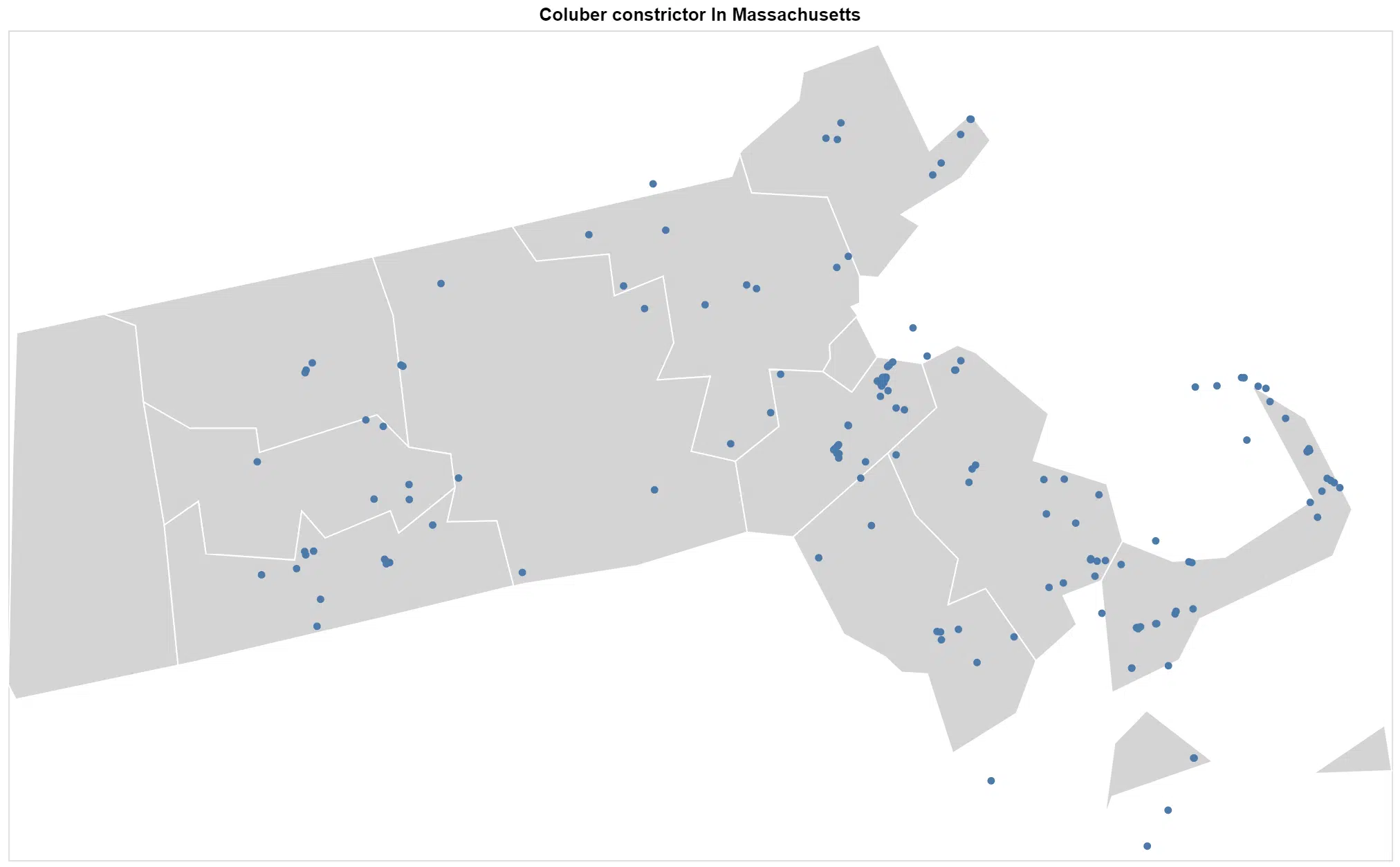
The Eastern black racer is usually found near water and is very common in residential areas.
7. Eastern Hognose Snake

Scientific name: Heterodon platirhinos.
Common name: eastern hog-nosed snake, spreading adder.
Length: up to 46 in (116 cm).
Venomous: No.
The Eastern hognose snake can grow up to 46 inches (116cm) in length.
They are distinguished by their upturned nose, which is used for digging in the soil.
Their colors vary from orange or red to green, brown, gray or black, or a combination. They can have patches, checkers, or be a solid color.
Their bellies are a solid color of cream, gray, or yellow. The underside of the tail is lighter in color than the belly.
They are not considered venomous, though some humans may have an allergic reaction to the snake’s saliva, which can cause localized swelling.
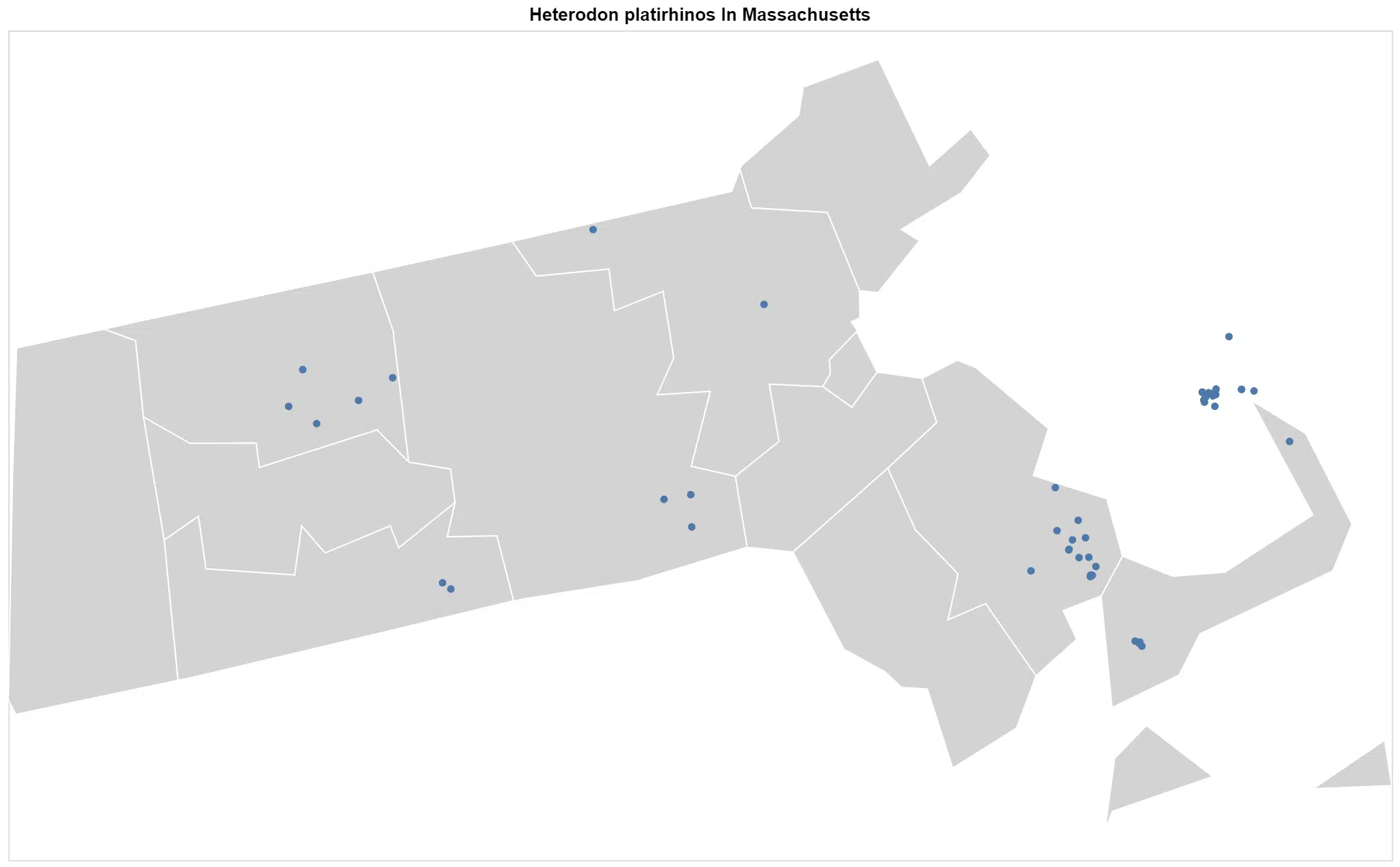
If threatened, they mimic a cobra, flattening their necks and raising their heads from the ground, while hissing and striking, but they do not try to bite.
They will use their heads to butt you and if that doesn’t work, they will roll onto their backs, where they play dead, letting off an awful smell.
8. Eastern Milk Snake

Scientific name: Lampropeltis triangulum triangulum.
Common name: eastern milksnake.
Length: 52 inches (132 cm).
Venomous: No.
Eastern milk snakes grow to 52 inches (132cm) in length with smooth and shiny scales. They have three to five black-bordered brown or red patches on the length of their body, which is on a tan or gray background. Their underside has a checkerboard pattern in black and white.
These are popular pets and are often bred in captivity for the pet trade. They are docile and will not bite unless they are handled roughly.
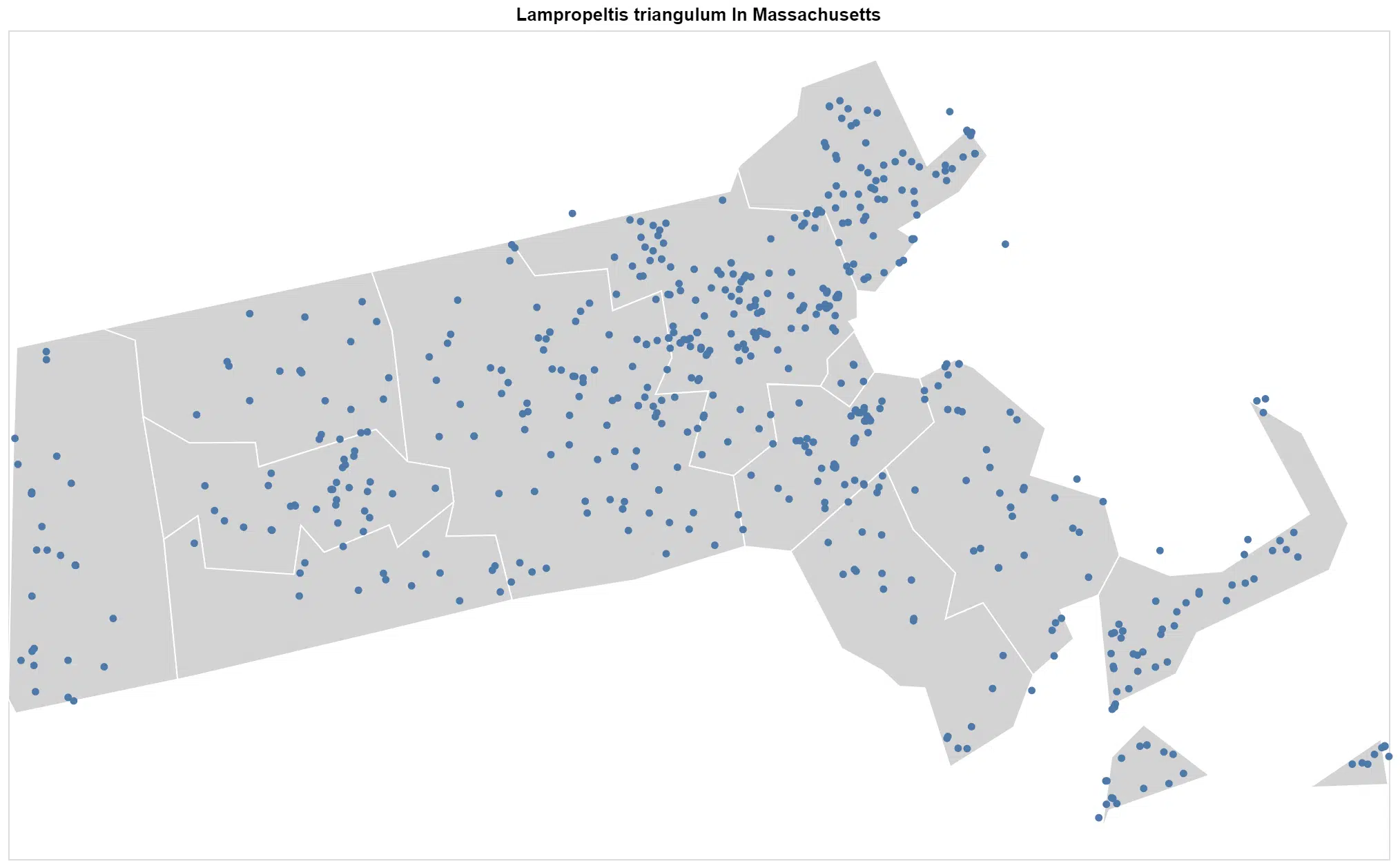
Further Reading:
9. Eastern Ribbon Snake
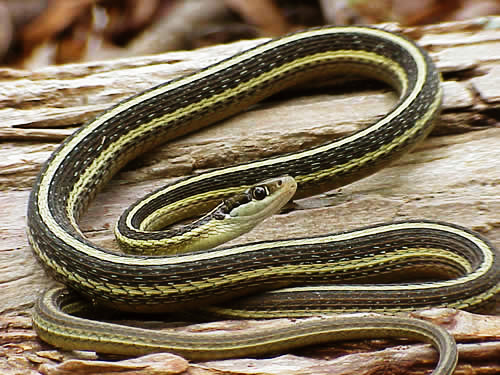
Scientific name: Thamnophis sauritus sauritus.
Common name: eastern ribbon snake, common ribbon snake.
Length: 16 – 28 in (41 – 71 cm).
Venomous: No.
The ribbon snake is a common non-venomous garter snake that can grow up 35 inches (89cm).
They are easily identified with dark brown color and yellow stripes.
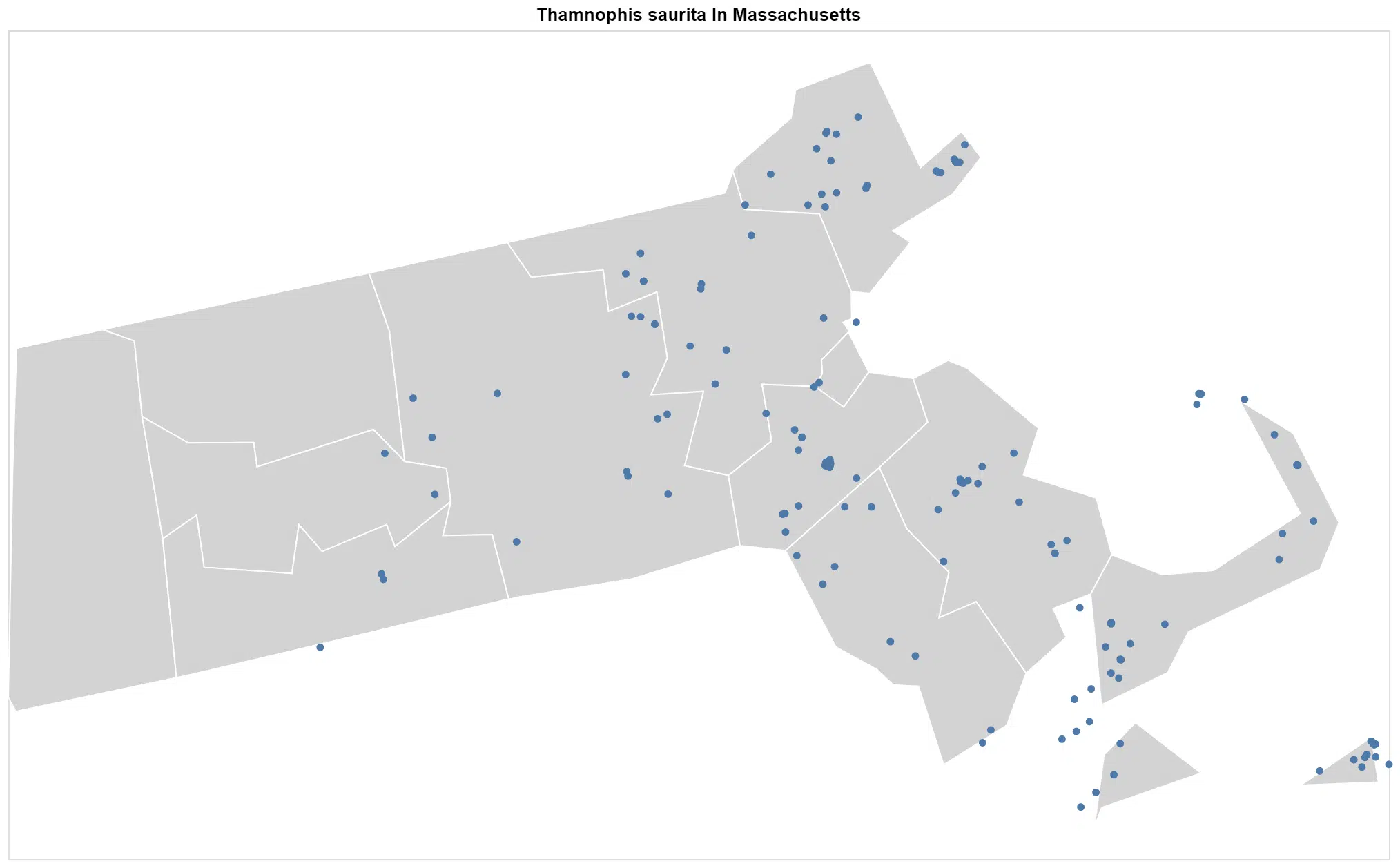
They prefer damp climates and are often encountered near creeks, streams, lakes, marshes and wet woodlands. They have also been observed in rocky areas and forests, though they do swim in order to catch prey.
10. Eastern Worm Snake

Scientific name: Carphophis amoenus.
Common name: (eastern) worm snake.
Length: around 13 in (33.5 cm)
Venomous: No.
The Eastern worm snake can grow to 13 inches (34cm) with smooth and glossy scales.
They have small heads that are not any wider than their neck. They have pink coloration, extending onto the dorsal scales.
Their diet consists mostly of earthworms, though they do eat slugs or any other creatures that fit in their mouth.
They are protected in Massachusetts under the Massachusetts Endangered Species Act.
Further Reading:
11. Northern Red-bellied Snake

Scientific name: Storeria occipitomaculata.
Common name: Northern red-bellied snake.
Length: 4 – 12 in (10 – 31 cm)
Venomous: No.
The North red-bellied snake is a solid color of tan/brown, olive/brown, chestnut/brown, gray, black, or gray/brown.
They have three yellow spots on the back of their heads. Their bellies are brick or coral red. Their color often is made of three different shades, which creates a striped pattern.
They grow to around 12 inches (31cm) in length.
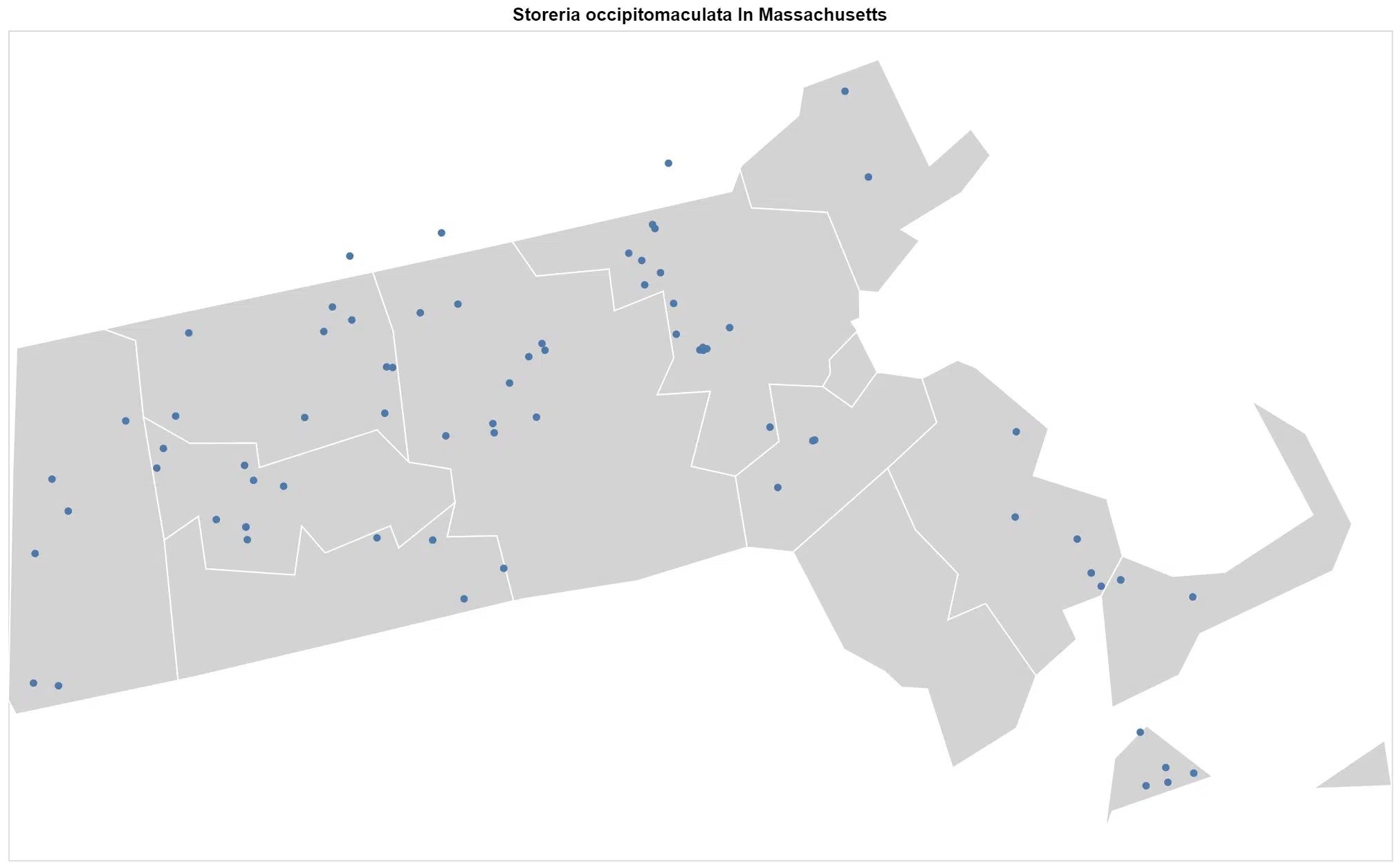
These snakes are often encountered in moist gardens, woodlands, and flower beds, where they hide under rocks and logs.
12. Northern Water Snake

Scientific name: Nerodia sipedon.
Common name: banded water snake, Northern water snake.
Length: up to 4 feet.
Venomous: No.
The Northern water snake can reach up to 4ft 5 inches (135cm) in length and can be gray, red, brown/black, or brown in color with dark cross bands on the neck and dark patches over the rest of the body.
As they age they darken and their patterning becomes less obvious, some even change to completely black. Their underside is yellow, gray, or white with red or black crescents.
They are non-venomous and harmless to humans, though they resemble the cottonmouth and are often killed due to fear. You can distinguish the two, the water snake is more slender with a flattened head that is the same width as their neck.
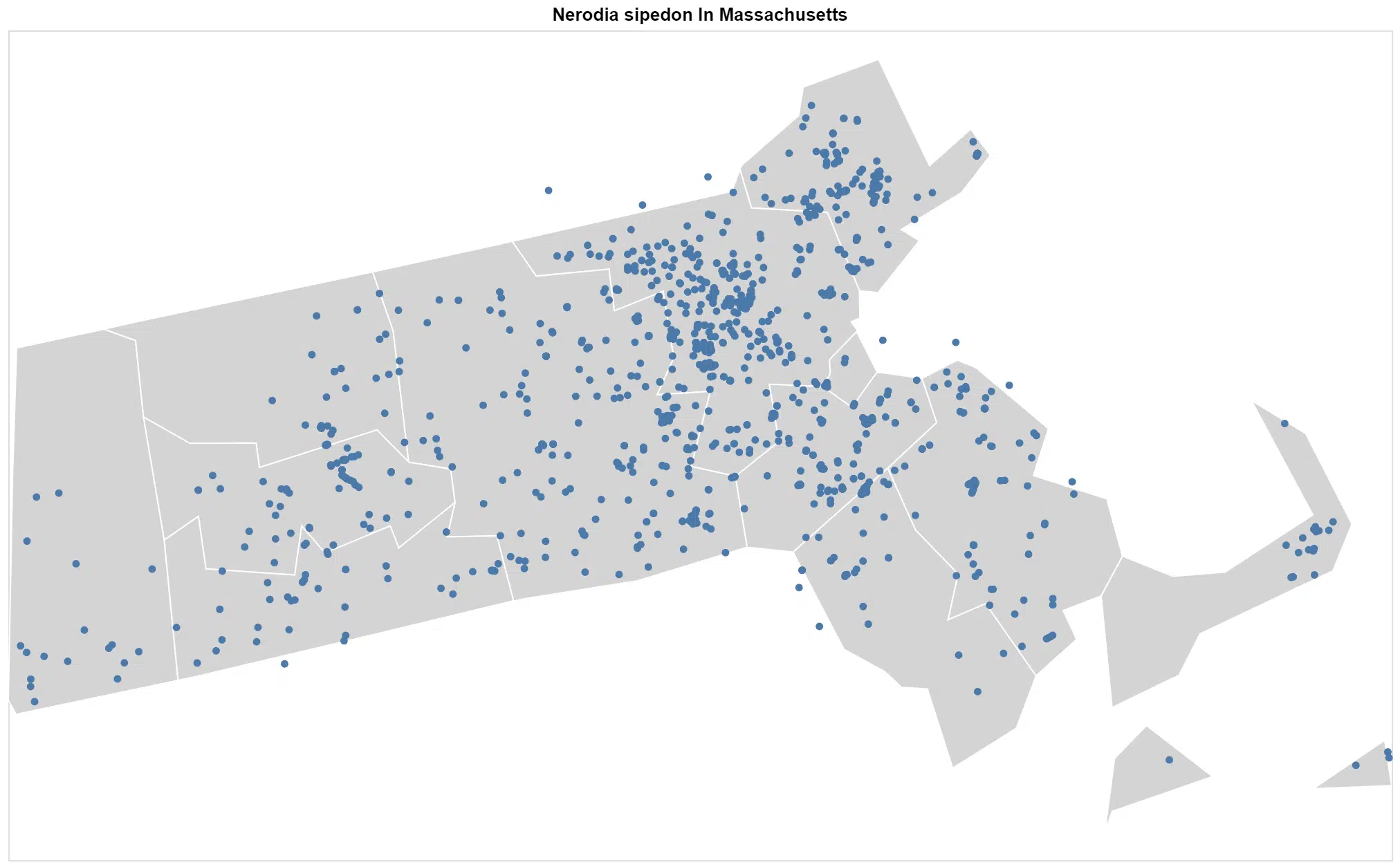
They are commonly encountered basking on rocks and in brushes. They hunt along the water’s edge searching for frogs, worms, small birds, and fish.
They will dive into the water if disturbed and swim. They will defend themselves and can give a painful bite.
13. Ringneck Snake
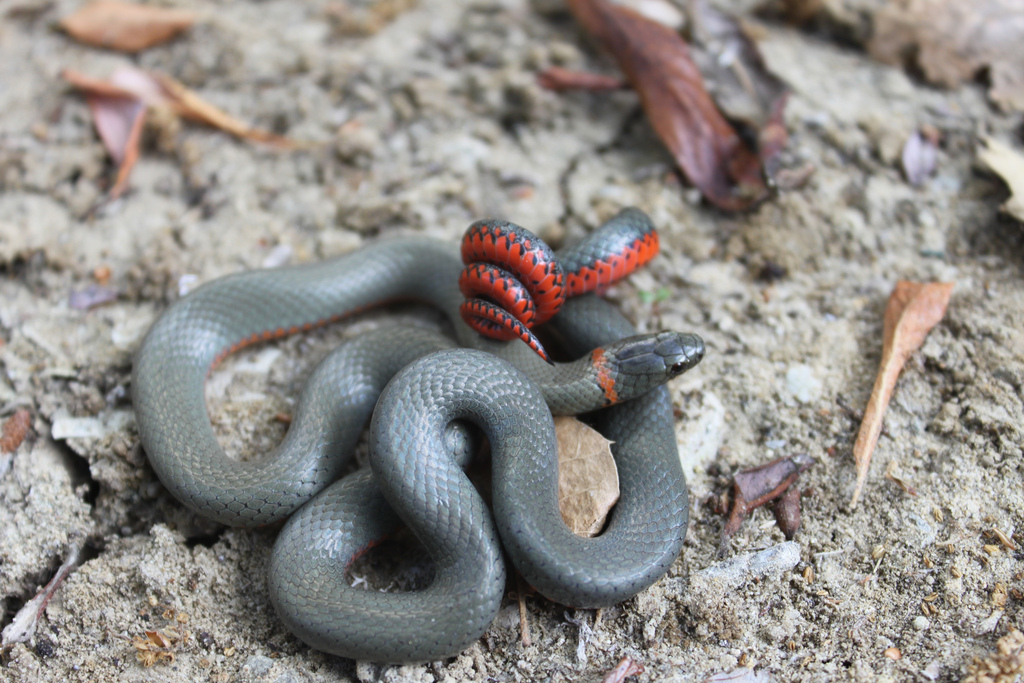
Scientific name: Diadophis punctatus.
Common name: ringneck snake.
Length: 10 – 15 in (25 – 38 cm)
Venomous: No.
Ringneck snakes are a solid color of brown, blue/gray, black, or olive with a yellow, yellow/orange, or red neckband. Their heads are darker than the rest of the body.
On their ventral side, they have red or yellow/orange colorations.
They can grow up to 15 inches (38cm) and live in a range of habitats, though they do prefer habitats that offer plenty of covers.
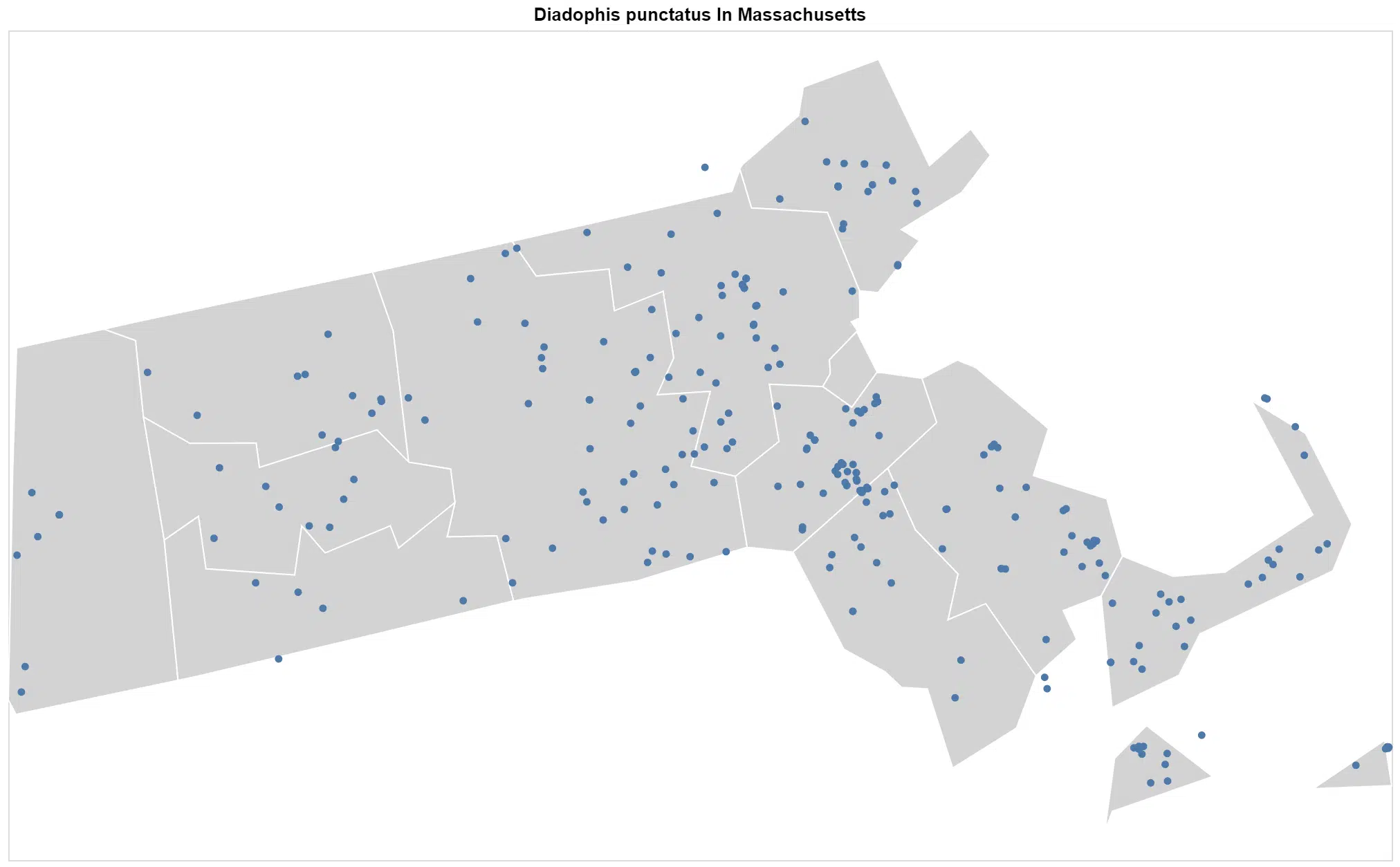
They are often found in woodlands, where they share their dens with other ringneck snakes. They can often be encountered when hiding under rocks and debris.
14. Smooth Greensnake

Scientific name: Opheodrys vernalis.
Common name: smooth green snake, grass snake.
Length: 14 – 20 in (36 – 51cm)
Venomous: No.
Smooth green snakes are non-venomous snakes, often referred to as grass snakes.
They are slender and grow up to 20 inches (51cm) in length.
They can be encountered in open woods, marshes, and meadows, along with being seen on the edge of streams.
They are non-aggressive and will seldom bite, preferring to flee if it feels threatened.
They are solid light green on their backs with a white to yellow colored belly.
Juveniles range from brown to olive green or blue-gray until their first molt.
They have red tongues with a black tip, which they use to smell around them.
They can be found in meadows, open woods, and marshes, where they prefer being on the ground.
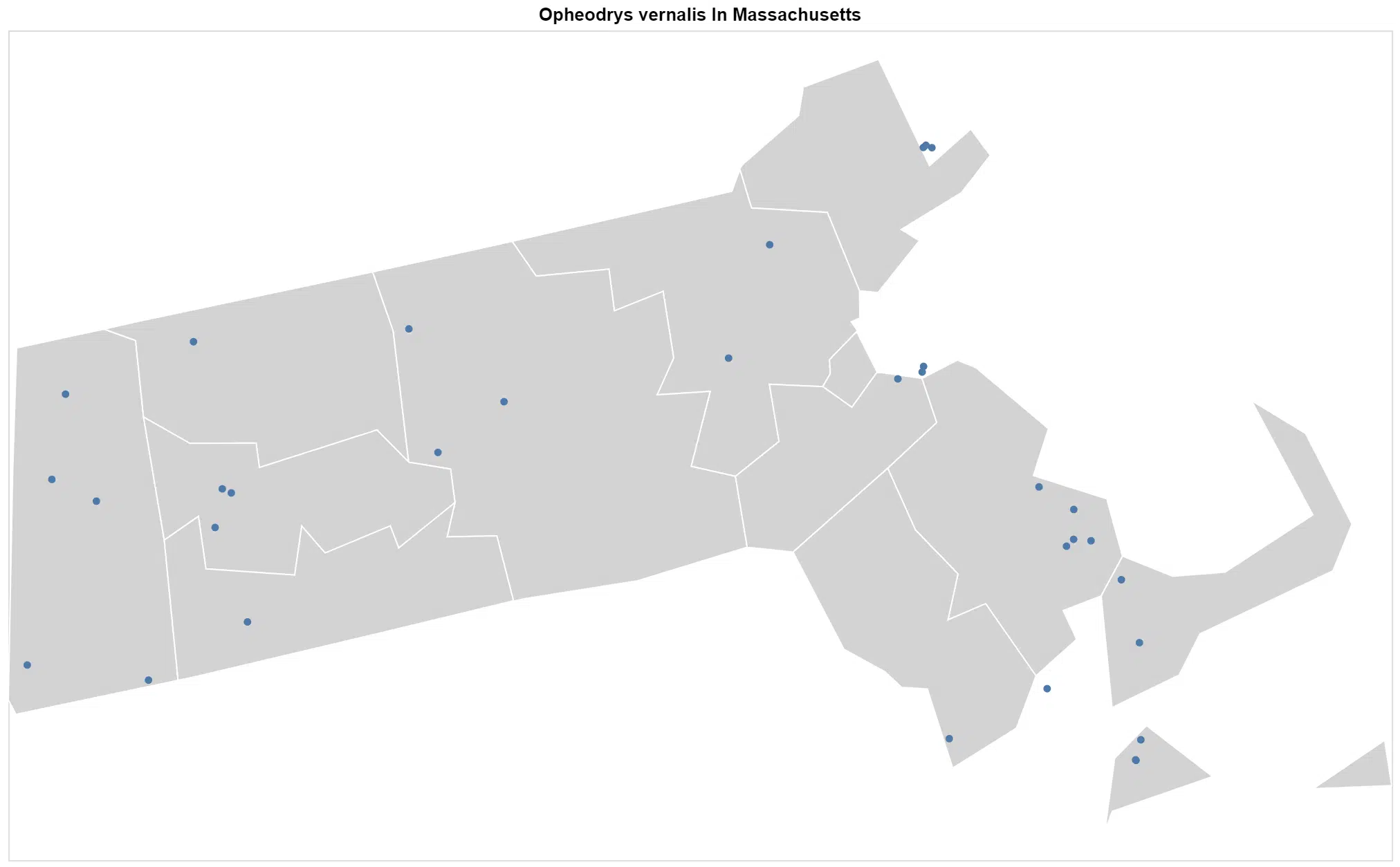
How To Tell A Poisonous Snake In Massachusetts
Timber Rattlesnakes
It’s not that easy to identify a timber rattlesnake. Though the most obvious feature is the rattle, which you can hear as you approach. Though some snakes will mimic the rattlesnake, by vibrating their tails in dead leaves.
If the tail, just before the rattle is black velvet in appearance, then you are dealing with a rattlesnake.
The most obvious way to tell a poisonous timber rattlesnake from other snakes is the cross bands with zigzag edges that run down the back, along with the rattle at the tip of their tails.
Northern Copperheads
It’s not always easy to distinguish between the venomous Northern copperhead and the Northern water snake or the Eastern milk snake( the water snake, and milk snake are not considered venomous).
Knowing the difference in patterns can help you quickly identify what type of snake you are dealing with.
Northern copperheads have a very unique hourglass pattern on their backs, which is usually darker than the base color. It is wide on the sides and becomes narrow across the back. No other snake has this pattern in Massachusetts.
Eastern milk snakes, on the other hand, have a dark pattern which is irregular patches, which are outlined in black and run down the body. Sometimes they have a Y or V shape in a lighter color on the back of their heads.
The Northern water snake has a dark pattern of a reversed hourglass, which is wider on its back and narrows at the side. They often have a small dark patch on the side of the snake, which is set in a lighter color.
What To Do When You See A Snake In Massachusetts
At Home
If you see a snake at your home, whether inside or in the yard, the best thing you can do is leave it alone. Snakes are usually shy and will try and get away from you rather than attack. They only attack if you provoke them.
If the snake is inside the home, remove all people and pets from the room and close the door. Use a towel to cover the gap between the floor and door to stop the snake from getting into other areas of the home, while you call a professional snake catcher.
If you’re out in the yard and you see a snake, be sure to stay away and watch where it goes. If it goes into a barn or shed, maybe under your vehicle, then call the professional snake catcher. If it goes towards the open bush, then chances are it won’t return.
In Nature
It’s not uncommon to encounter snakes when running or hiking. It is always recommended that you back away slowly and give the snake time to move on. As mentioned before, they are shy and would rather escape than be aggressive.
If you recognize the snake as a rattlesnake, move away very slowly, be sure you get a good few meters away, allowing the snake to carry on and move out the way.
Never throw rocks, use a stick to prod the snake, or try and catch it, this will only agitate the snake and this can result in a bite.
What To Do When You Are Bitten
While not easy, the most important thing to do when bitten by a snake is to remain calm and get medical treatment immediately.
The good news is that the majority of snakes in Massachusetts are not venomous and even the venomous snakes that do bite are very rarely fatal.
All snake bites should be considered as an emergency, especially if you cannot identify the snake.
What to Do
- Get as far away from the snake as possible
- Get medical treatment immediately
- Try and get a description of the snake. This includes coloration, size, and any patterning, which can help the medical team identify the snake and provide you with anti-venom if needed.
- Stay calm, being anxious can increase your heart rate and if bitten by a venomous snake, this will speed up the spread of the venom inside your body.
- You can wrap a bandage around the bite, cover the entire limb. You should apply pressure to the bite until you can get a bandage.
- Do not lift the bite area above your heart.
- If the snake spits in your eye, rinse with water for about fifteen minutes.
What Not to Do
- Do not cut or suck on the would
- Do not eat or drink anything
- Do not rub the bite area or soak it using home remedies
- Do not try and catch and kill the snake, this increases the risk of another bite.
How To Prevent Snakes In Your Yard
There are a few things you can do to prevent the risk of snakes getting into your yard. These include:
- Keep your grass cut short. Mow your lawn often. Snakes love tall grass.
- Remove rock piles and any debris. Snakes enjoy hiding under rocks and debris, which can attract them to your yard.
- Do not overwater your garden, moisture attracts insects, frogs, birds, and rodents, which in turn attract snakes.
- Try not to use mulch in your yard, as it not only attracts snakes but their prey as well.
- Store your firewood well away from the home, as the small crevices between the firewood are an attractive hiding place for snakes.
Summary
Out of the 14 snakes in Massachusetts, only 2 are considered venomous. Though many of the non-venomous snakes will bite if provoked.
Learn how to identify the snakes, so you know which ones are dangerous and which ones you can leave and that will not cause harm to you, your family, and pets.
Knowing what to do if you encounter a snake and how to avoid snakes in your yard can all help you eliminate the risk of a snake bite.